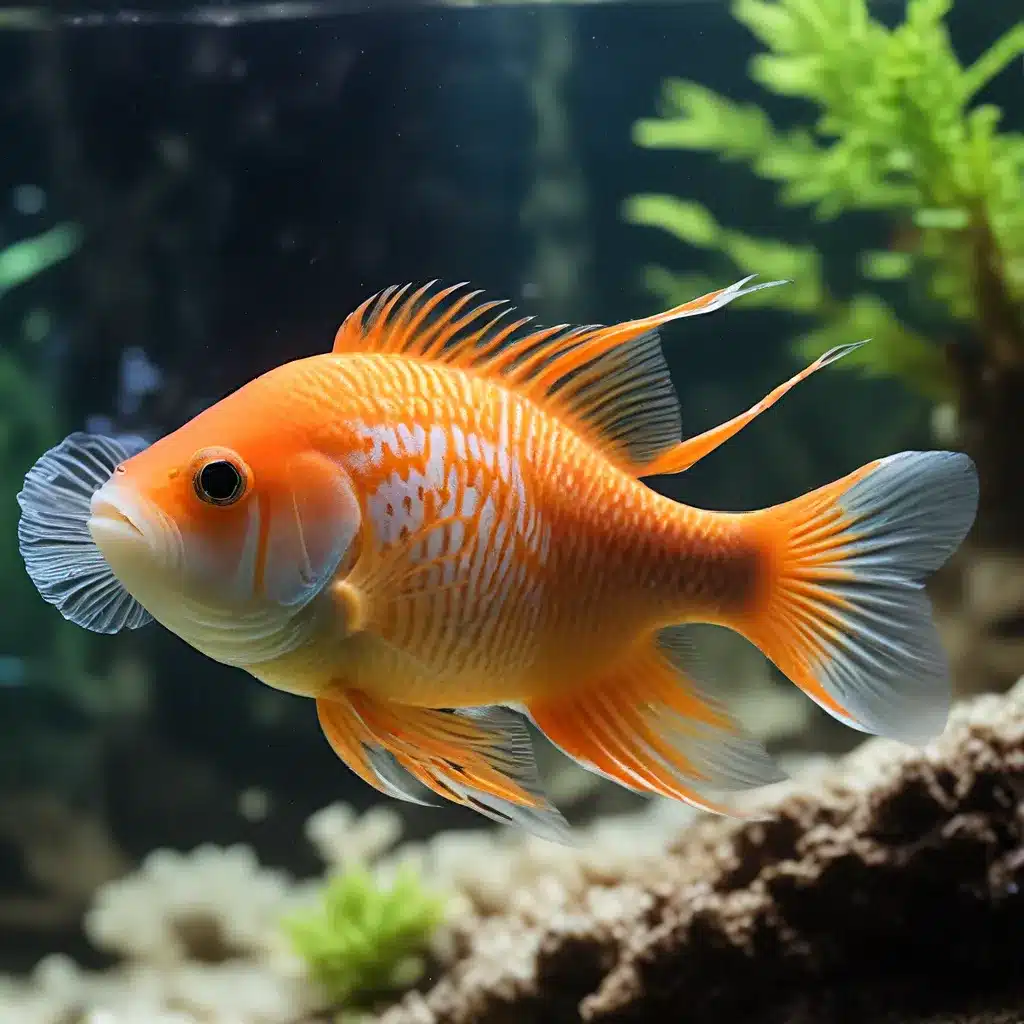
As passionate aquarium enthusiasts, we know that the key to a thriving aquatic ecosystem lies in understanding and accommodating the unique behaviors of our finned companions. Fish are complex, intelligent creatures, each with their own set of preferences, social dynamics, and environmental needs. By delving deeper into the intricacies of fish behavior, we can create aquarium setups that not only showcase the natural beauty of these animals but also support their overall well-being.
The Importance of Behavioral Ecology in Aquarium Keeping
Just as researchers in the field of marine biology study the behavioral ecology of wild dolphin populations to inform conservation efforts, we as aquarists must adopt a similar approach to ensure the long-term success of our aquarium inhabitants. Understanding the natural behaviors and environmental needs of fish is crucial for maintaining a thriving and harmonious aquarium ecosystem.
By closely observing the interactions, feeding habits, and adaptive responses of our fish, we can gain valuable insights that inform our aquarium design, water management, and species selection. This knowledge allows us to create setups that not only meet the physical requirements of our fish but also cater to their behavioral and social needs, ultimately leading to a more engaging and rewarding aquarium hobby.
Navigating Species-Specific Behaviors
Each fish species exhibits a unique set of behaviors, social dynamics, and environmental preferences. Aquarists who take the time to research and understand these species-specific traits are better equipped to create aquariums that allow their fish to thrive.
For instance, some fish species are known to be highly territorial, requiring ample hiding spots and specific tank configurations to minimize aggression and stress. Others are schooling fish, which demand the presence of conspecifics to feel secure and exhibit their natural social behaviors. Ignoring these nuances can lead to poor water quality, stunted growth, and even outbreaks of disease.
By carefully selecting compatible fish species, providing appropriate tank dimensions, and incorporating the necessary environmental cues, we can create aquarium ecosystems that allow our fish to express their innate behaviors and flourish.
Incorporating Behavioral Insights into Aquascaping
Aquascaping, the art of designing and arranging aquatic plants and hardscape elements, is not just about creating visually stunning underwater landscapes. It is also a powerful tool for catering to the behavioral needs of our fish.
The strategic placement of driftwood, rocks, and aquatic plants can provide ample hiding spots, social interaction zones, and foraging opportunities for our finned friends. For example, incorporating dense vegetation and decor can offer shy or timid fish a sense of security, while open swimming areas allow for the natural schooling behavior of certain species.
Additionally, the choice of aquatic plants can have a profound impact on fish behavior. Some species thrive in heavily planted aquariums, as the lush vegetation mimics their natural habitats and offers a sense of security. Others may prefer a more open, minimalist layout to accommodate their active and exploratory nature.
By aligning our aquascaping choices with the specific behavioral traits of our fish, we can create aquarium environments that not only look visually stunning but also support the overall well-being and natural behaviors of our aquatic inhabitants.
Maintaining Water Quality and Its Impact on Behavior
Proper water management is a cornerstone of successful aquarium keeping, and it extends far beyond just maintaining optimal water parameters. The quality of the water in our aquariums can significantly influence the behavior and well-being of our fish.
Factors such as pH, temperature, and the presence of harmful contaminants or waste products can all impact the physiological and psychological state of our aquatic friends. For example, sudden fluctuations in water parameters can cause stress and trigger aggressive or erratic behavior, while prolonged exposure to poor water quality can lead to health issues and stunted growth.
By consistently monitoring and maintaining stable water conditions, we can create an environment that supports the natural behavioral patterns of our fish. This includes regular water changes, the use of efficient filtration systems, and the careful introduction of any new fish or plants to the aquarium.
Fostering Natural Behaviors through Aquarium Enrichment
Aquarium enrichment goes beyond simply providing the basic physical requirements for our fish. By incorporating elements that encourage natural behaviors, we can create a more stimulating and engaging environment for our aquatic companions.
This can include the introduction of foraging opportunities, such as hiding food in vegetation or providing substrate for natural digging behaviors. Offering a variety of hides and vertical structures can also encourage natural exploration and schooling behaviors. Additionally, introducing live plants or driftwood can provide hiding spots and territorial markers that allow fish to establish their own social hierarchies.
By encouraging these natural behaviors, we not only enhance the overall well-being of our fish but also create a more dynamic and visually captivating aquarium experience for ourselves and our viewers.
Embracing the Complexities of Fish Behavior
As aquarium enthusiasts, we have the unique opportunity to dive into the fascinating world of fish behavior and use this knowledge to create thriving aquatic ecosystems. By understanding the nuances of species-specific behaviors, incorporating behavioral insights into our aquascaping, and maintaining optimal water quality, we can provide our finned friends with the necessary conditions to thrive.
Remember, a successful aquarium is not just about the physical aspects, but also the ability to create an environment that caters to the natural behaviors and social needs of our fish. By embracing the complexities of fish behavior, we can unlock the true beauty and wonder of the underwater world, right in the comfort of our own homes.
So, let’s embark on this journey of discovery, explore the captivating behaviors of our aquatic companions, and use this knowledge to cultivate aquariums that are not only visually stunning but also havens of well-being for the creatures we love. Visit King Aquarium to learn more about our diverse selection of aquarium equipment, live plants, and fish species to help you on your aquarium journey.

